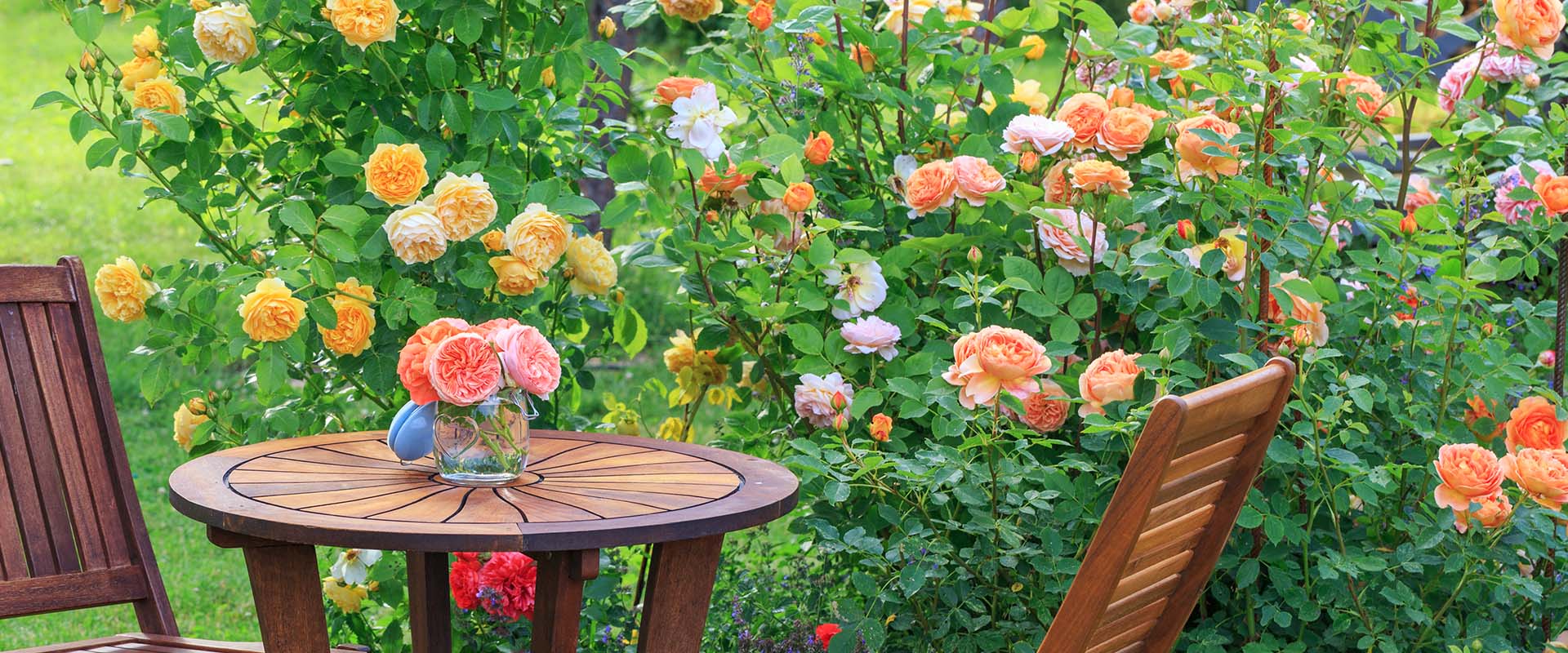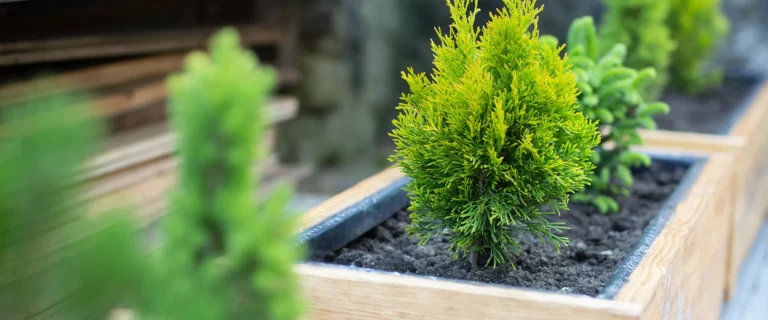Yay, we have rose bushes here at The Gardener’s Center. But why do we have the roses we have? Sean tells us why he brings these particular roses in, and why he’s a big fan.
First, did you know that Sean’s first horticulture job was tending to a formal rose garden full of “old-school, high-maintenance” hybrid tea roses, grandifloras, floribundas and miniature roses? Suffice it to say, the man knows roses.
He also knows that times change and that many people don’t have the time, energy or desire to do all the spraying, deadheading, irrigating, fertilizing, coning, mulching, you-name-it that those old-school roses require.
David Austin Roses (English Shrub Roses)
With that in mind, Sean makes sure The Gardener’s Center has the types of roses that are much easier to care for. They include English shrub roses, also known as cabbage roses, that were developed by David Austin. These are repeat bloomers (giving you roses throughout the summer and not just in June!), with a wide range of colors (white, pink, yellow, apricot and peach), and lovely, strong fragrances. These David Austin roses are also disease resistant.
Shrub Roses
Other favorites are the shrub roses, which include Knock Out roses. These also bloom all summer and also don’t require the weekly fungicide applications that the roses of old needed. A particular favorite shrub rose of Sean’s is “Iceberg” — it has pure white blossoms and is a compact shrub, just two to three feet tall and three to four feet wide.
Drift Roses
And then there are drift roses, a sort of groundcover rose. Great for color on embankments and hillsides, they grow just about a foot tall, but can spread three or four feet wide. They, too, are repeat bloomers and are low maintenance.
Climbing Roses
Finally, we have climbing roses. And hey, fun fact, despite their name, climbing roses don’t climb. (“Not even a little bit,” says Sean.) They basically have really tall, really weak stems that “flop.”
The better name for these lovelies is rambling roses, or ramblers. That’s not to say that if you want your rose to, ahem, ramble, then you’ll need to train, stake and tie those rose stems for the first few years. Once you have a rose like this attached to a trellis or an arbor, you’ll have an established framework and all is well.
A favorite climbing variety for Sean is the “Zepherine Drouhin.” Why? It’s thornless and it can tolerate some shade, unlike most roses who like at least eight hours of sun a day.
All Roses
Roses are heavy feeders, meaning you should be giving them some fertilizer or plant food once a month, from March through the end of August; Sean’s believes the best food out there for them is Espoma Organic Rose-tone.
Once September rolls around, you want to stop feeding as that encourages growth too late in the season.
Something else, roses are not big fans of acidic soil, something we have here in Connecticut. You can make your roses even happier by giving them a couple applications of lime during the growing season. The Gardener’s Center carries Espoma Organic Garden Lime, which can make a big difference, especially if your roses aren’t growing as nicely as you think they should be.
Want to know more about roses? You can guess who juuuuust might have the answers. Find him (and beautiful roses) here at The Gardener’s Center.





